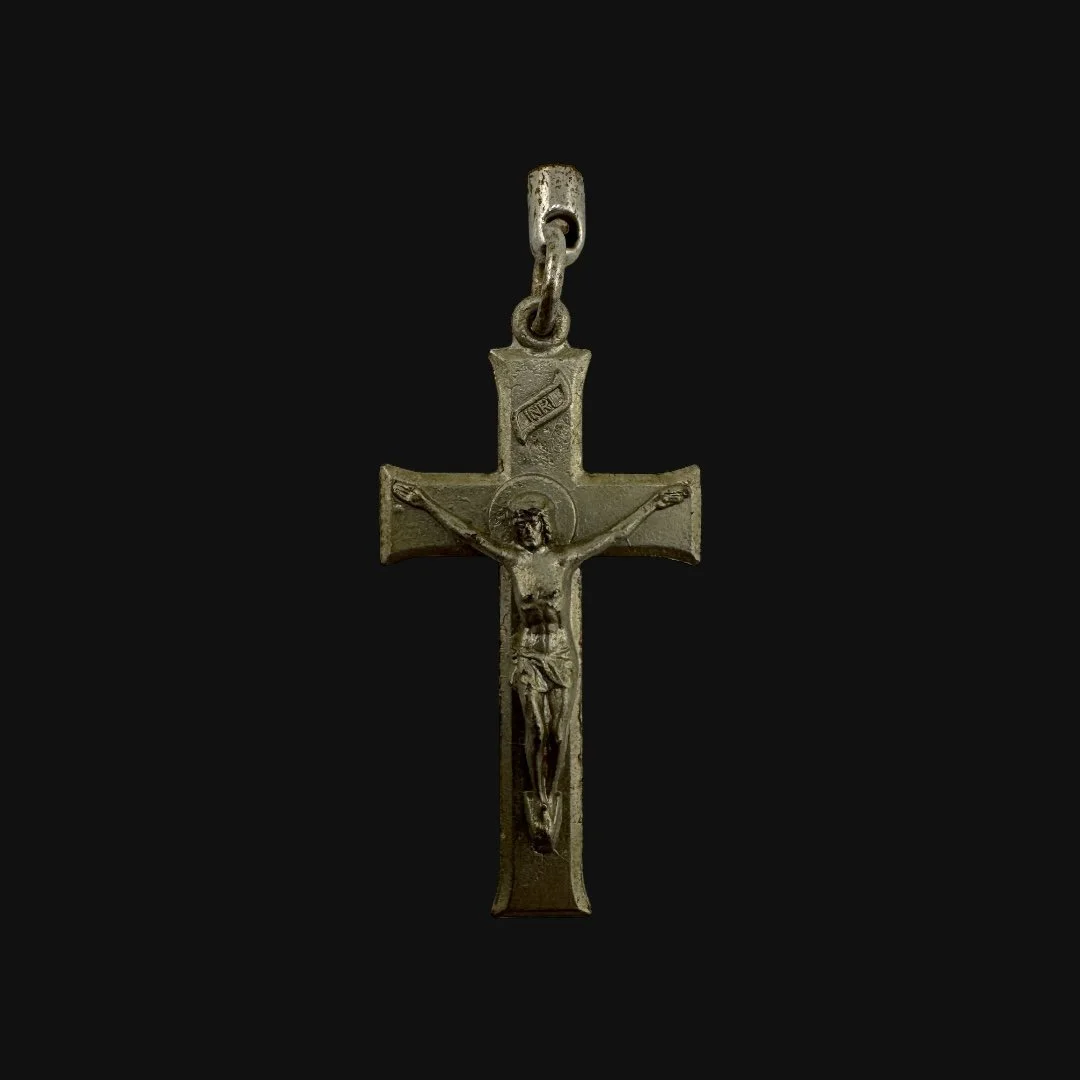 Image 1 of 13
Image 1 of 13

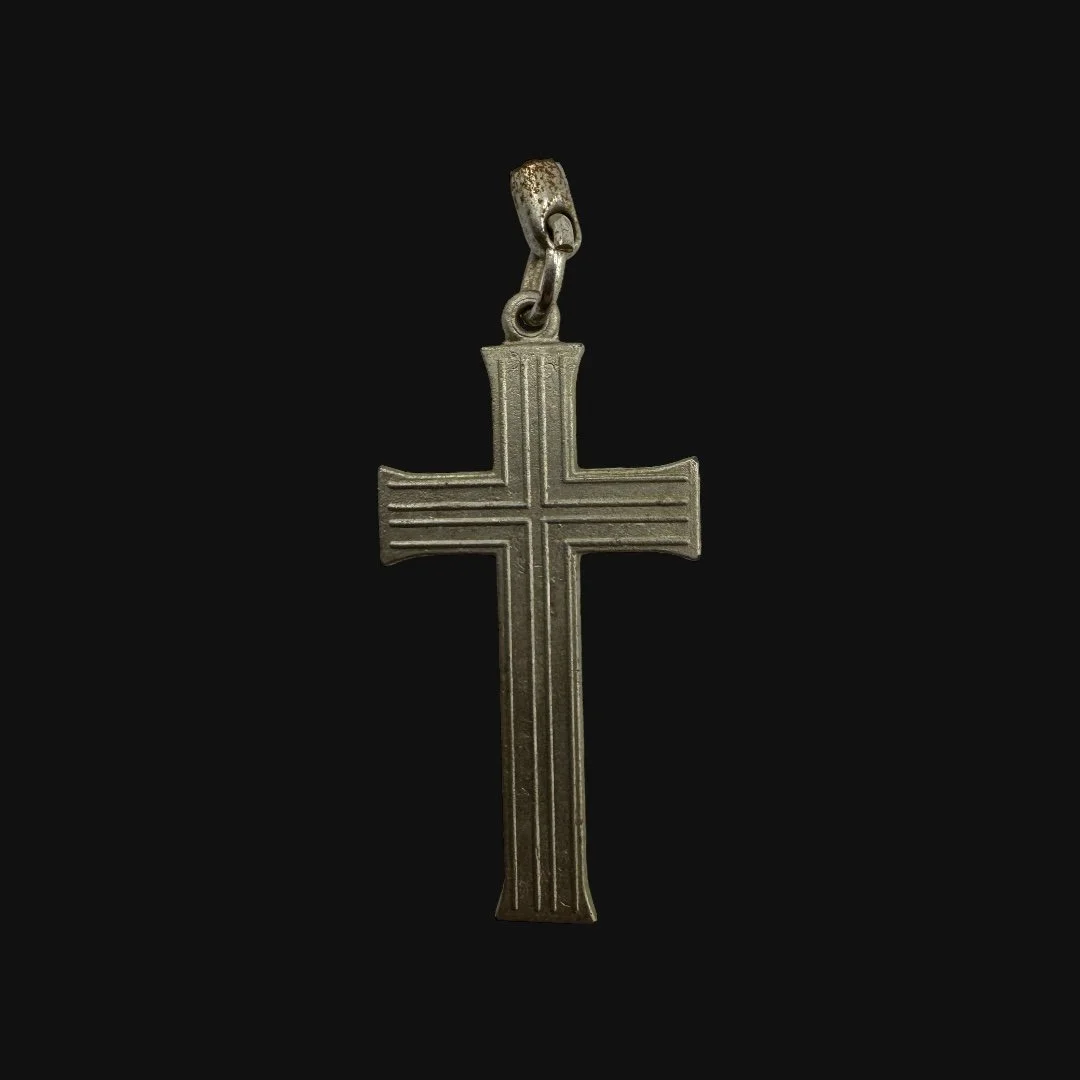 Image 2 of 13
Image 2 of 13

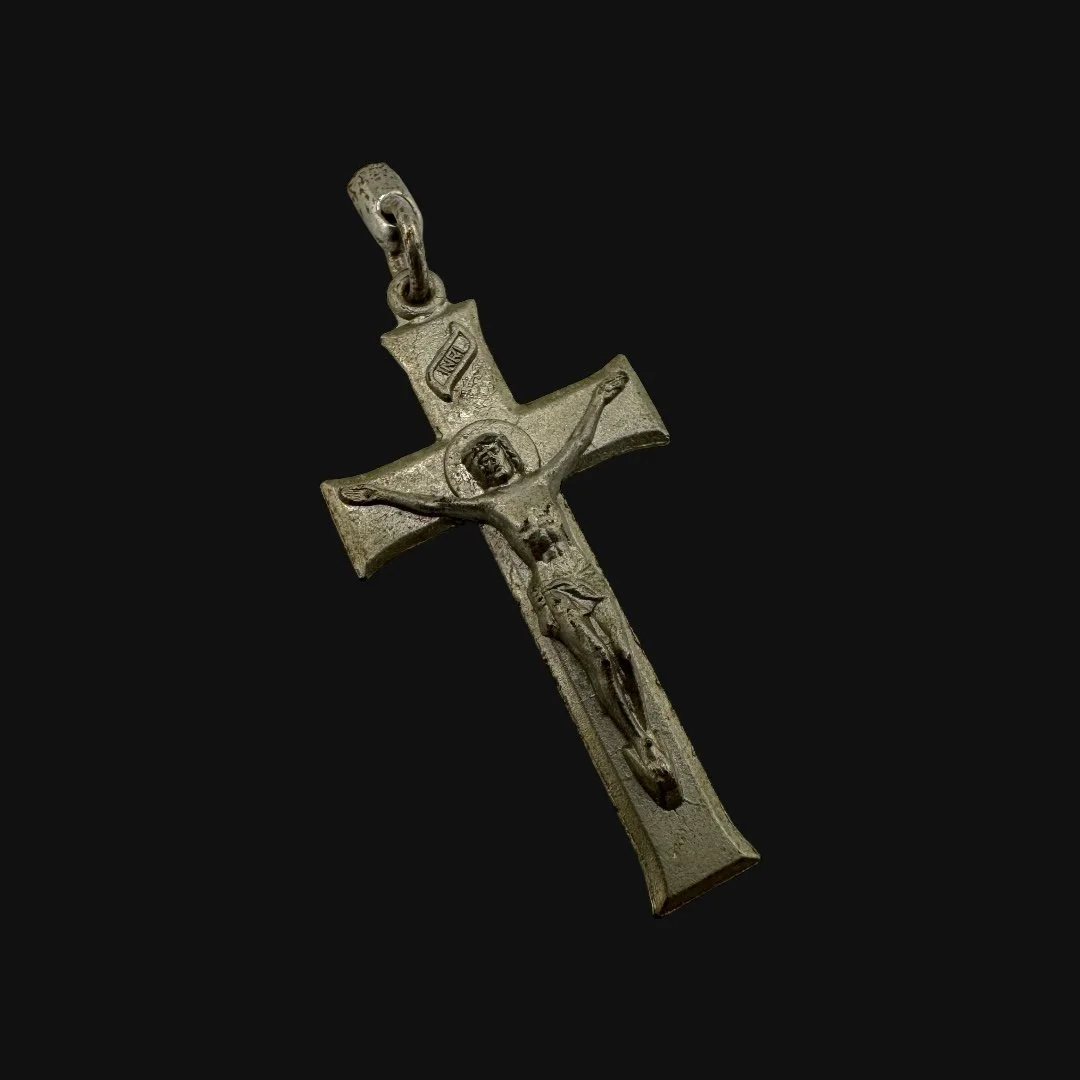 Image 3 of 13
Image 3 of 13

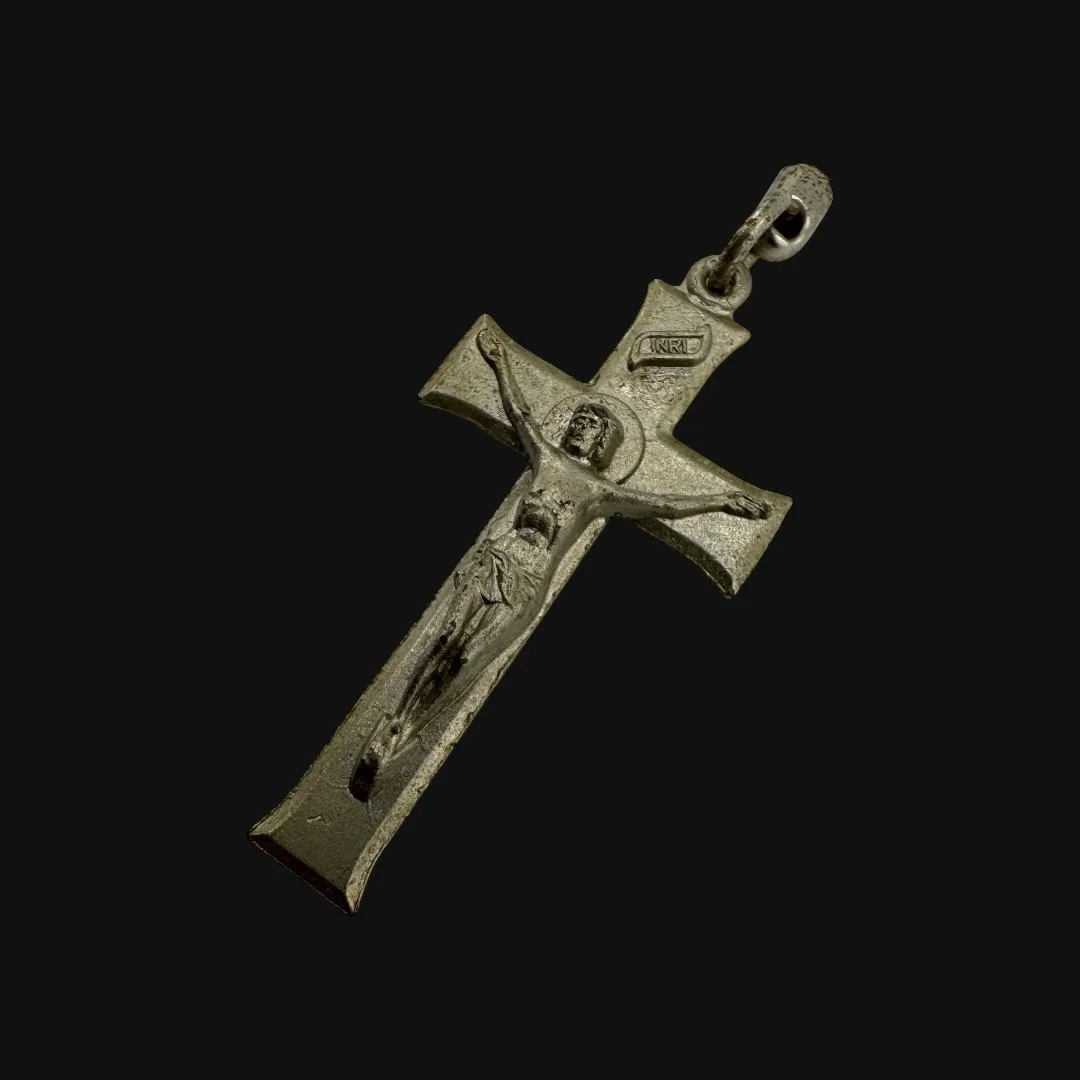 Image 4 of 13
Image 4 of 13

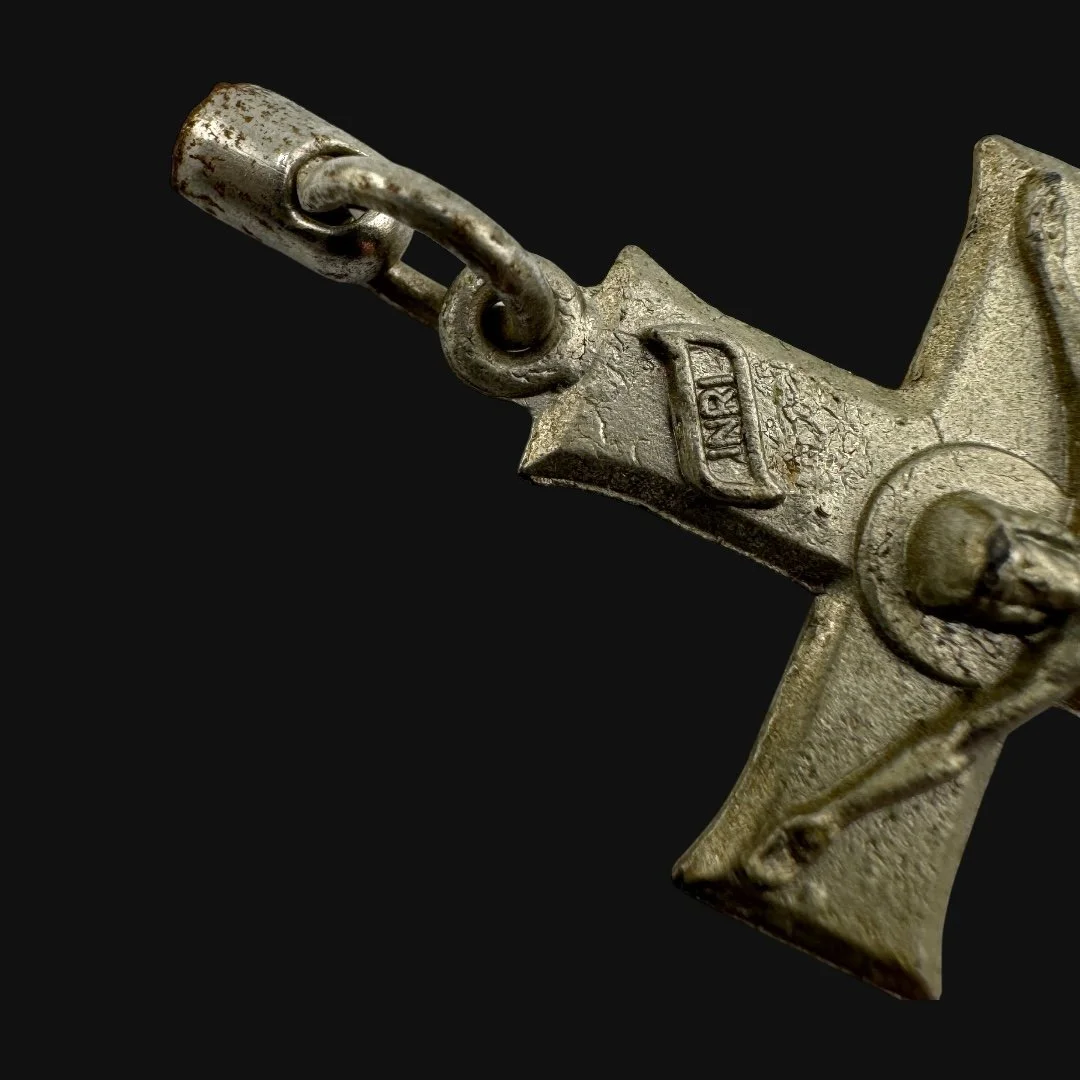 Image 5 of 13
Image 5 of 13

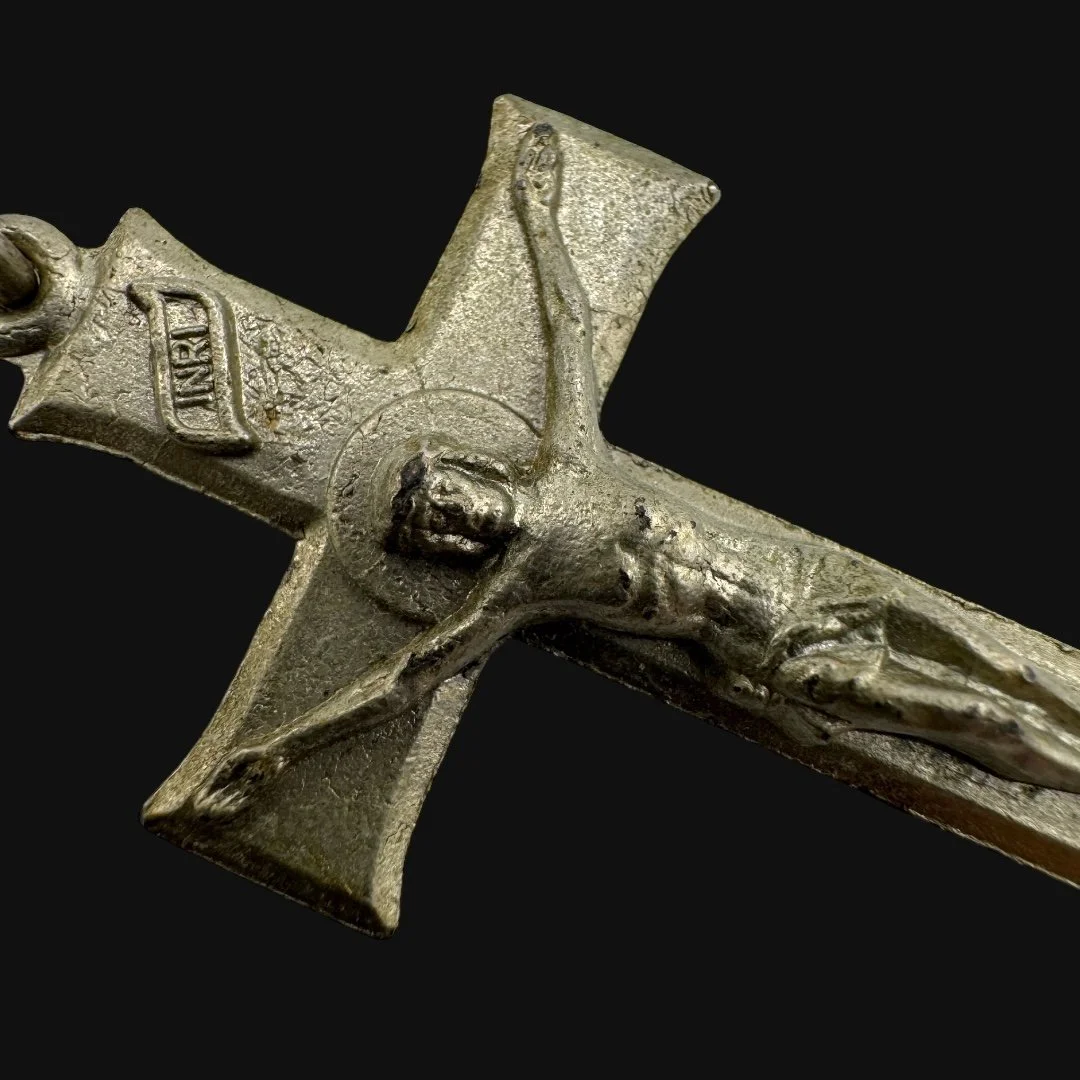 Image 6 of 13
Image 6 of 13

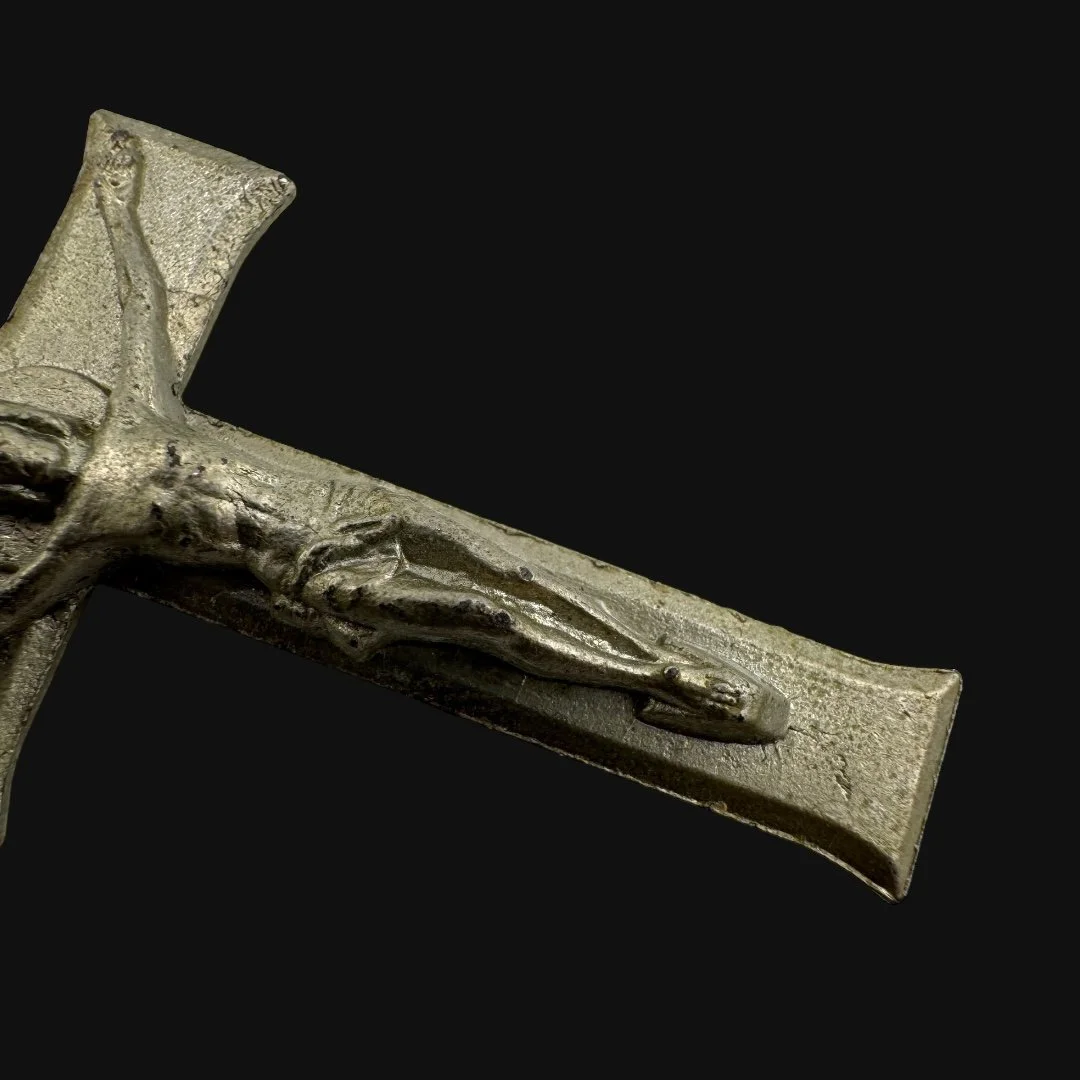 Image 7 of 13
Image 7 of 13

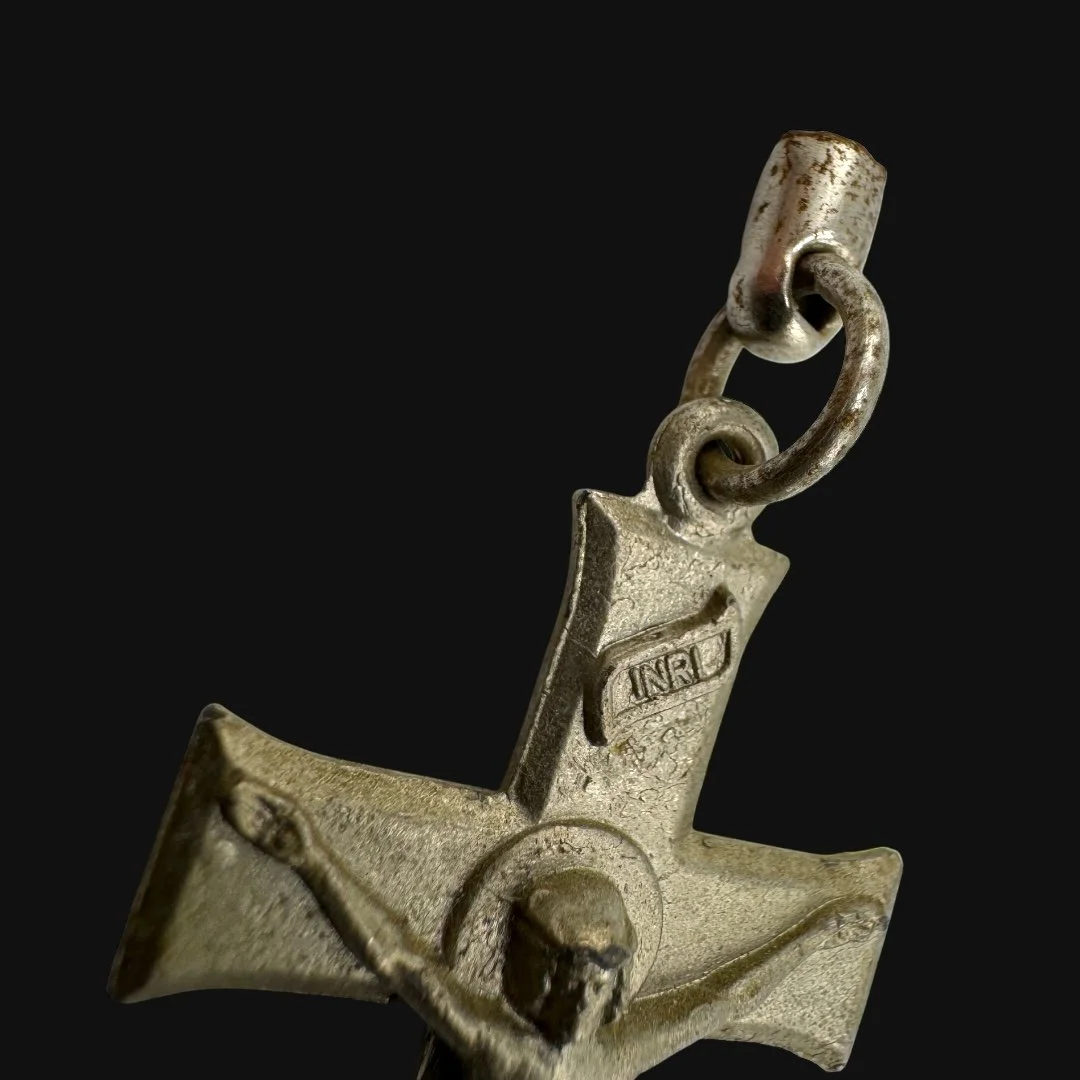 Image 8 of 13
Image 8 of 13

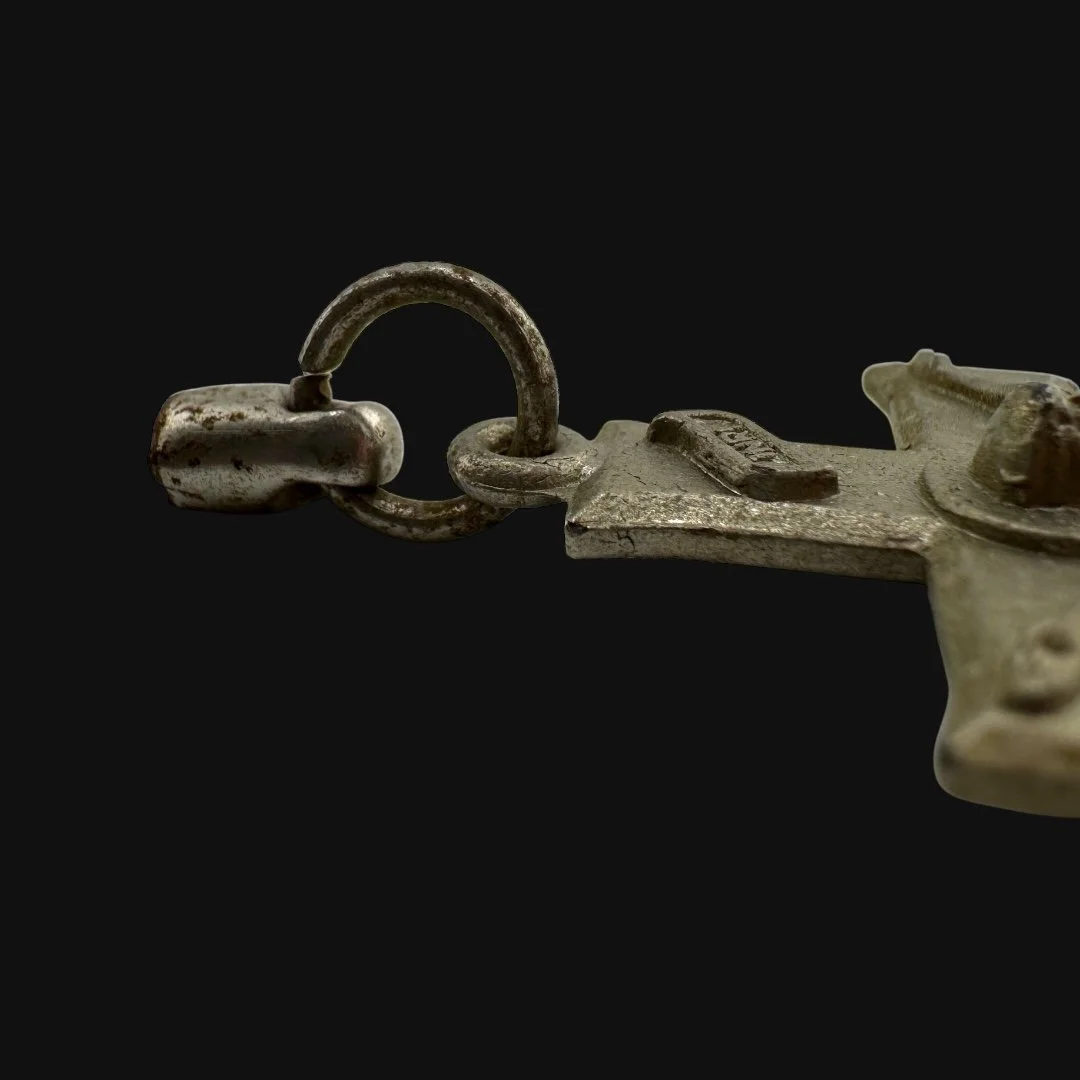 Image 9 of 13
Image 9 of 13

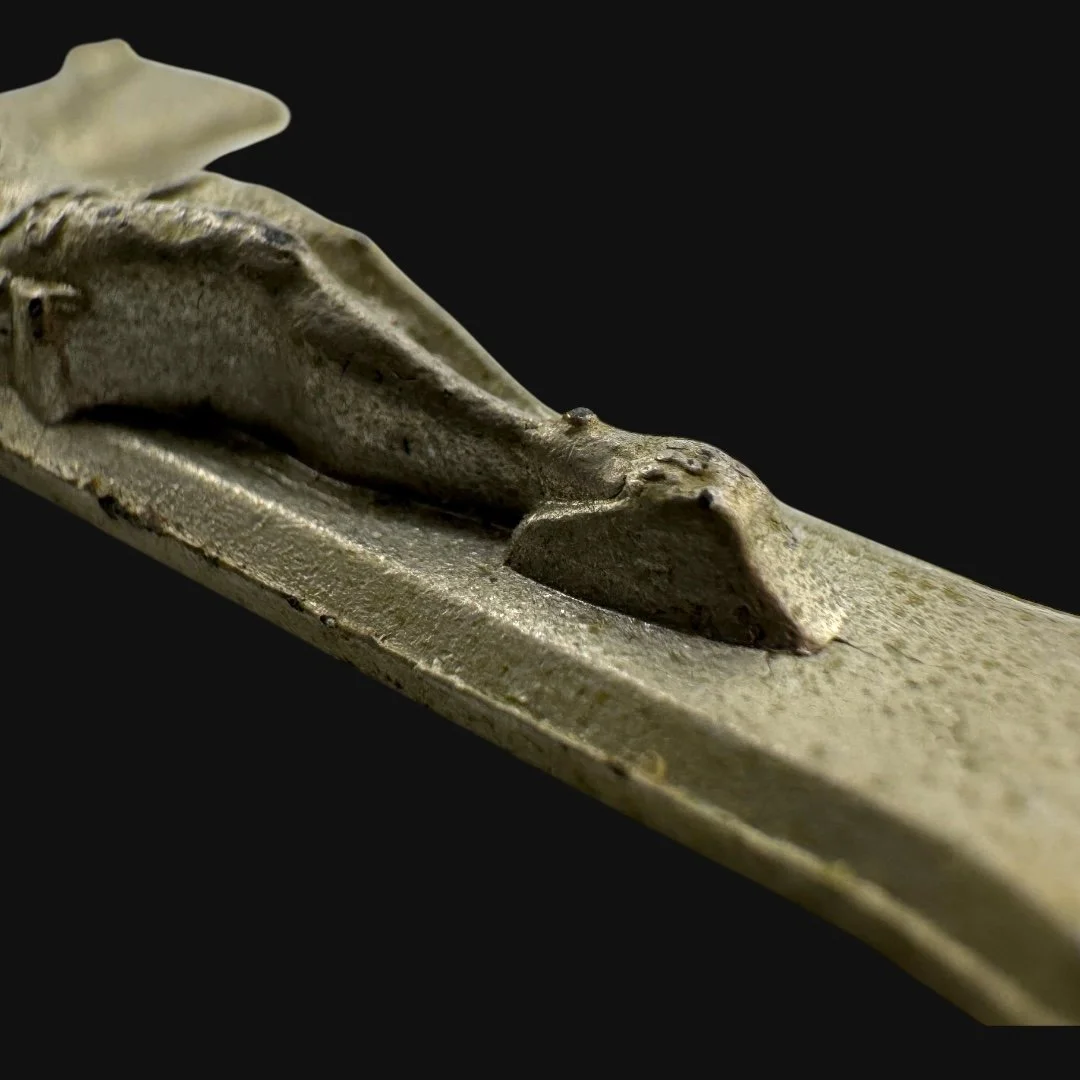 Image 10 of 13
Image 10 of 13

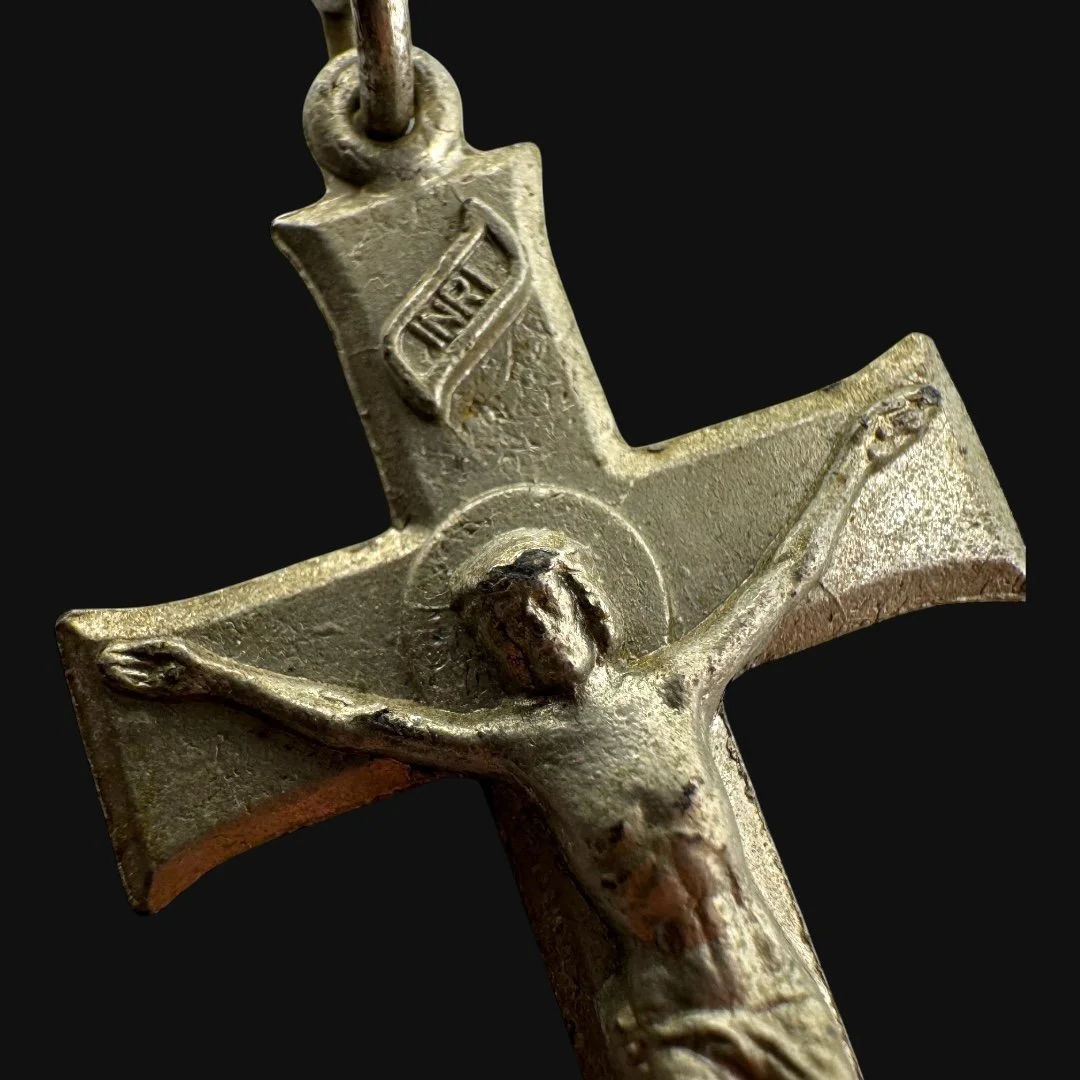 Image 11 of 13
Image 11 of 13

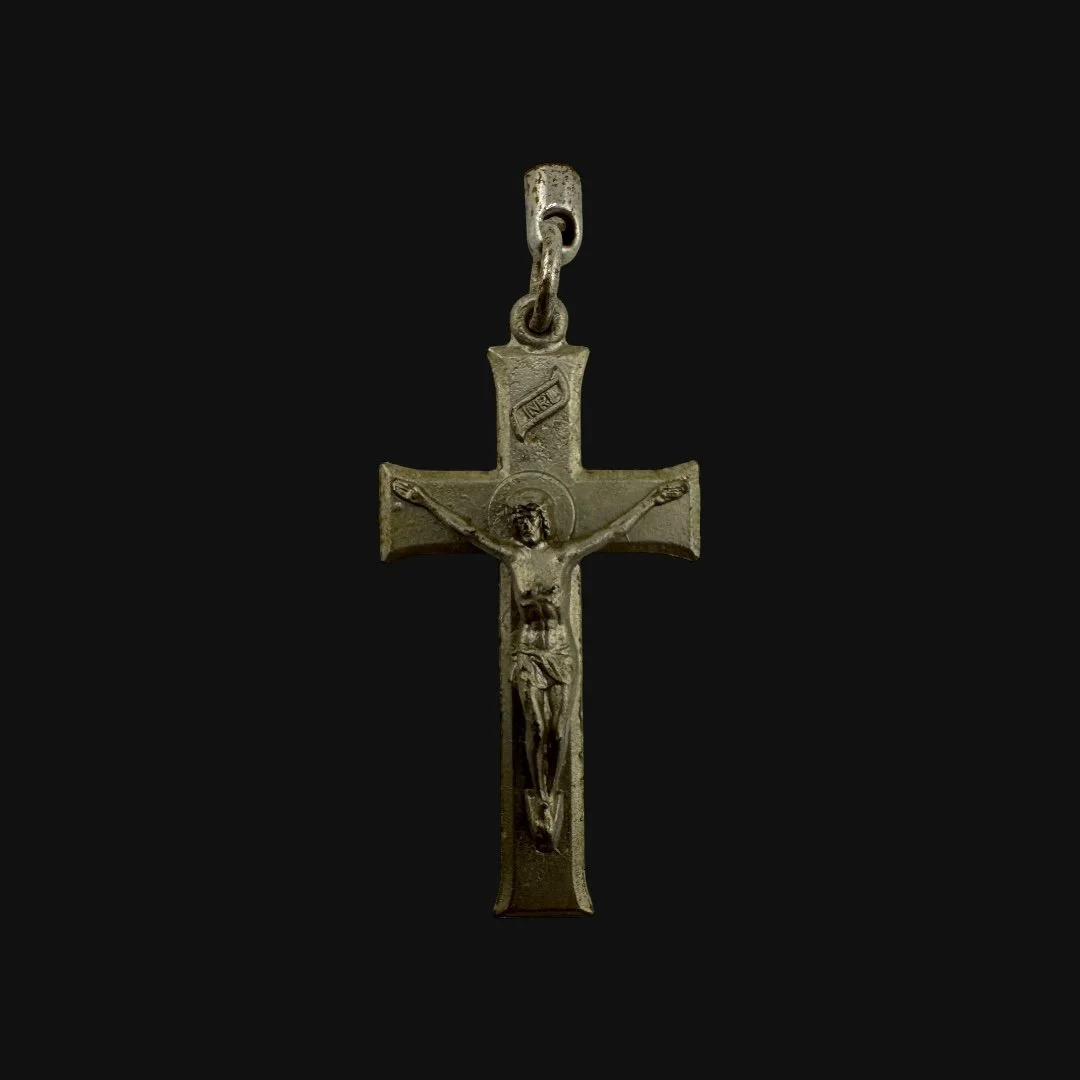 Image 12 of 13
Image 12 of 13

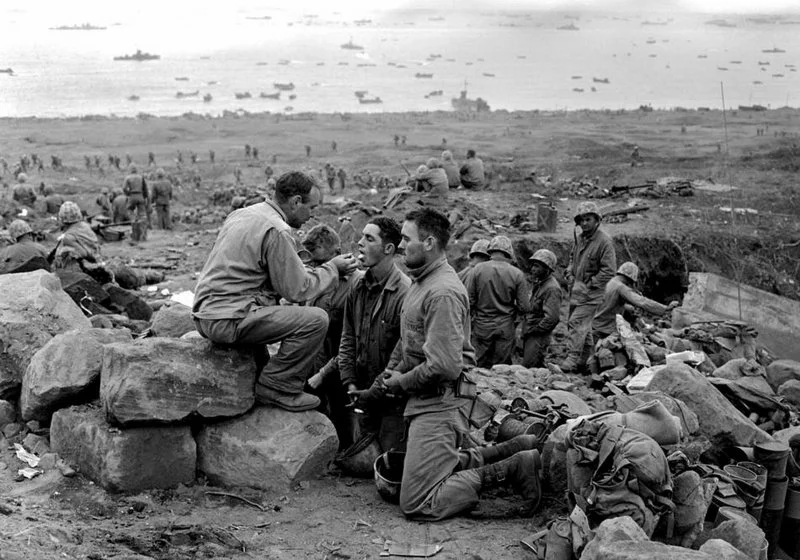 Image 13 of 13
Image 13 of 13














Original WWII 1941-1945 U.S. Soldier's “Crucifix” Theater-Worn Military Religious Necklace Pendant
Comes with a hand-signed C.O.A. and a full historical research write-up
From: World War II
Dated: 1941-1945
Pendant Size: Large (1.75 inches x 1 inch)
Wearable History Collection:
This authentic 1941-1945 WWII-era soldier’s necklace pendant, preserved in its original and unaltered condition, combines exceptional craftsmanship with lasting durability, making it fully suitable for modern wear today. As part of our exclusive World War II “Wearable History Pendant Collection,” it offers the rare opportunity to own and wear a genuine piece of World War II. Both a timeless accessory and a tangible link to the past, this truly one-of-a-kind necklace pendant stands as a wearable tribute to the courage and sacrifice of a generation.
During the Second World War, soldiers often carried more than just the standard equipment issued to them. Rifles, rations, and helmets were essential for survival on the battlefield. Yet for many, spiritual protection felt just as vital. Among Christian servicemen, few items carried greater meaning than a pendant of Christ on the cross.
These crucifix pendants were not supplied by the U.S. Army, Navy, or Marine Corps. They were private purchases or treasured gifts from family and loved ones. A mother might press one into her son’s palm before he boarded a train to boot camp. A wife or sweetheart might mail one overseas, tucked carefully between folded pages of a letter. Some soldiers bought them themselves at church supply shops, Post Exchanges, or local markets while stationed abroad.
By the 1940s, countless crucifix medals were worn in the field. They were made of silver, brass, or base metals, sometimes simple and modest, sometimes finely detailed. Soldiers often strung them beside their dog tags so that Christ rested close to their hearts. Others slipped them into a pocket, where fingers could find comfort during moments of fear.
For Catholic and Protestant soldiers alike, the figure of Christ on the cross represented more than religious devotion. It embodied sacrifice, endurance, and hope. In the face of war’s violence, the crucifix served as a reminder that suffering was not without meaning, and that redemption could follow even the darkest hours. To some, it was a silent prayer for protection. To others, a link to home and to faith communities far away.
These pendants became vessels of memory and devotion. A father’s blessing. A mother’s whispered prayer. A sweetheart’s vow of return. Soldiers mentioned them in letters, noting how they wore them through night patrols or long journeys at sea. Pilots kept them near before takeoff. Sailors wore them across stormy waters. Infantrymen held onto them in muddy foxholes, drawing strength from the small token of faith as artillery thundered overhead.
The crucifix pendant was more than an ornament. It was a lifeline of belief carried into the uncertainty of war. A symbol of sacrifice that mirrored the trials of battle. And a promise of hope that, no matter how far from home, they were never truly alone.
Examples in Wartime Use
European Theater: On the night of June 6, 1944, paratroopers leapt into darkness over Normandy with crucifix pendants resting against their dog tags. Many veterans’ belongings recovered years later still include these tokens of faith, carried through the hedgerows of France, across Belgium, and deep into Germany. For men thrown into the heart of combat, the small cross offered a reminder of endurance and sacrifice.
Pacific Campaigns: On islands like Saipan and Iwo Jima, Marines clutched their crucifix pendants in foxholes between bombardments. In moments of silence, they drew strength from the image of Christ’s suffering, believing it mirrored their own trials and gave meaning to their struggle. Sailors, too, wore them across the vast and uncertain Pacific, trusting that Christ would steady them as storms and submarines threatened from every side.
Air Force Missions: Bomber crews flying dangerous raids over occupied Europe often slipped crucifix pendants into their flight jackets. Each mission carried staggering odds of loss. For many airmen, the crucifix became a silent prayer for survival, a companion in the skies when death felt only moments away. Pilots wrote home of keeping the cross “close at hand,” a reminder of sacrifice and a plea for protection as they soared into hostile skies.
The Legacy Within This WWII Necklace Pendant:
This original World War II soldier’s necklace pendant was worn as a symbol of faith as they faced the most dangerous campaigns of the war. From the beaches of Normandy and the frozen Ardennes to the islands of Guadalcanal and Iwo Jima, pendants like these traveled with their wearers through the fire of battle. They carried silent strength in the foxholes, aboard the landing craft, and in the skies above Europe and the Pacific. For many young men, they were reminders of family, faith, and home. Every scratch and worn edge tells a story. It reflects long marches under heavy packs, nights spent under artillery fire, and the constant weight of uncertainty. These pendants were deeply personal talismans, often gifted by loved ones, worn close to the heart through the trials of war. To own and wear an original World War II pendant today is to hold a tangible piece of that history. Each is one of a kind. No two carry the same marks, memories, or path through the war. Wearing this meaningful and historical WWII pendant is a natural conversation starter. A way to honor the service of family members who fought in the conflict and to continue carrying the legacy of the Greatest Generation forward. This pendant is not only jewelry. It is a living connection to the past. A reminder of courage, sacrifice, and the enduring spirit of those who shaped history in World War II.
Comes with a hand-signed C.O.A. and a full historical research write-up
From: World War II
Dated: 1941-1945
Pendant Size: Large (1.75 inches x 1 inch)
Wearable History Collection:
This authentic 1941-1945 WWII-era soldier’s necklace pendant, preserved in its original and unaltered condition, combines exceptional craftsmanship with lasting durability, making it fully suitable for modern wear today. As part of our exclusive World War II “Wearable History Pendant Collection,” it offers the rare opportunity to own and wear a genuine piece of World War II. Both a timeless accessory and a tangible link to the past, this truly one-of-a-kind necklace pendant stands as a wearable tribute to the courage and sacrifice of a generation.
During the Second World War, soldiers often carried more than just the standard equipment issued to them. Rifles, rations, and helmets were essential for survival on the battlefield. Yet for many, spiritual protection felt just as vital. Among Christian servicemen, few items carried greater meaning than a pendant of Christ on the cross.
These crucifix pendants were not supplied by the U.S. Army, Navy, or Marine Corps. They were private purchases or treasured gifts from family and loved ones. A mother might press one into her son’s palm before he boarded a train to boot camp. A wife or sweetheart might mail one overseas, tucked carefully between folded pages of a letter. Some soldiers bought them themselves at church supply shops, Post Exchanges, or local markets while stationed abroad.
By the 1940s, countless crucifix medals were worn in the field. They were made of silver, brass, or base metals, sometimes simple and modest, sometimes finely detailed. Soldiers often strung them beside their dog tags so that Christ rested close to their hearts. Others slipped them into a pocket, where fingers could find comfort during moments of fear.
For Catholic and Protestant soldiers alike, the figure of Christ on the cross represented more than religious devotion. It embodied sacrifice, endurance, and hope. In the face of war’s violence, the crucifix served as a reminder that suffering was not without meaning, and that redemption could follow even the darkest hours. To some, it was a silent prayer for protection. To others, a link to home and to faith communities far away.
These pendants became vessels of memory and devotion. A father’s blessing. A mother’s whispered prayer. A sweetheart’s vow of return. Soldiers mentioned them in letters, noting how they wore them through night patrols or long journeys at sea. Pilots kept them near before takeoff. Sailors wore them across stormy waters. Infantrymen held onto them in muddy foxholes, drawing strength from the small token of faith as artillery thundered overhead.
The crucifix pendant was more than an ornament. It was a lifeline of belief carried into the uncertainty of war. A symbol of sacrifice that mirrored the trials of battle. And a promise of hope that, no matter how far from home, they were never truly alone.
Examples in Wartime Use
European Theater: On the night of June 6, 1944, paratroopers leapt into darkness over Normandy with crucifix pendants resting against their dog tags. Many veterans’ belongings recovered years later still include these tokens of faith, carried through the hedgerows of France, across Belgium, and deep into Germany. For men thrown into the heart of combat, the small cross offered a reminder of endurance and sacrifice.
Pacific Campaigns: On islands like Saipan and Iwo Jima, Marines clutched their crucifix pendants in foxholes between bombardments. In moments of silence, they drew strength from the image of Christ’s suffering, believing it mirrored their own trials and gave meaning to their struggle. Sailors, too, wore them across the vast and uncertain Pacific, trusting that Christ would steady them as storms and submarines threatened from every side.
Air Force Missions: Bomber crews flying dangerous raids over occupied Europe often slipped crucifix pendants into their flight jackets. Each mission carried staggering odds of loss. For many airmen, the crucifix became a silent prayer for survival, a companion in the skies when death felt only moments away. Pilots wrote home of keeping the cross “close at hand,” a reminder of sacrifice and a plea for protection as they soared into hostile skies.
The Legacy Within This WWII Necklace Pendant:
This original World War II soldier’s necklace pendant was worn as a symbol of faith as they faced the most dangerous campaigns of the war. From the beaches of Normandy and the frozen Ardennes to the islands of Guadalcanal and Iwo Jima, pendants like these traveled with their wearers through the fire of battle. They carried silent strength in the foxholes, aboard the landing craft, and in the skies above Europe and the Pacific. For many young men, they were reminders of family, faith, and home. Every scratch and worn edge tells a story. It reflects long marches under heavy packs, nights spent under artillery fire, and the constant weight of uncertainty. These pendants were deeply personal talismans, often gifted by loved ones, worn close to the heart through the trials of war. To own and wear an original World War II pendant today is to hold a tangible piece of that history. Each is one of a kind. No two carry the same marks, memories, or path through the war. Wearing this meaningful and historical WWII pendant is a natural conversation starter. A way to honor the service of family members who fought in the conflict and to continue carrying the legacy of the Greatest Generation forward. This pendant is not only jewelry. It is a living connection to the past. A reminder of courage, sacrifice, and the enduring spirit of those who shaped history in World War II.